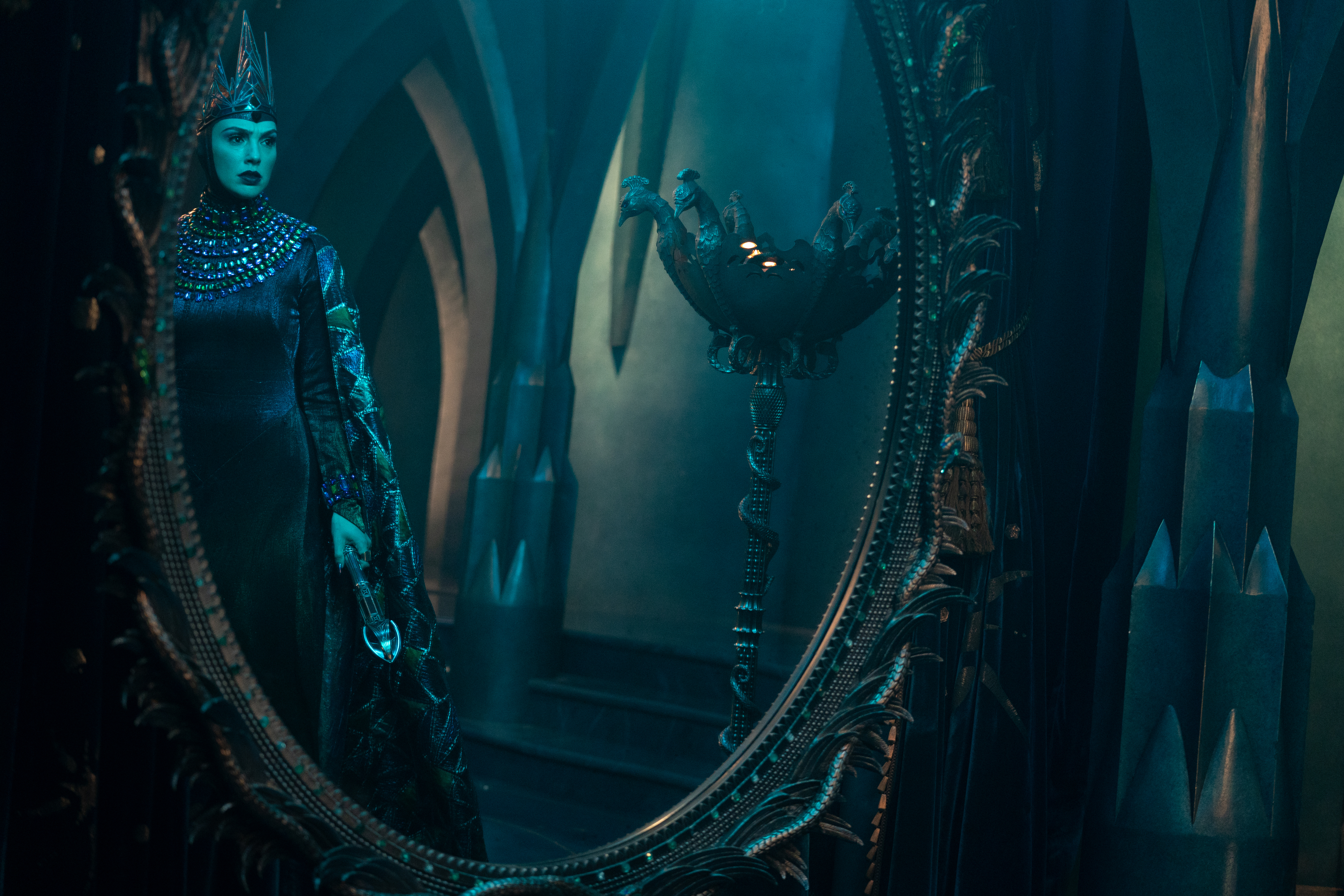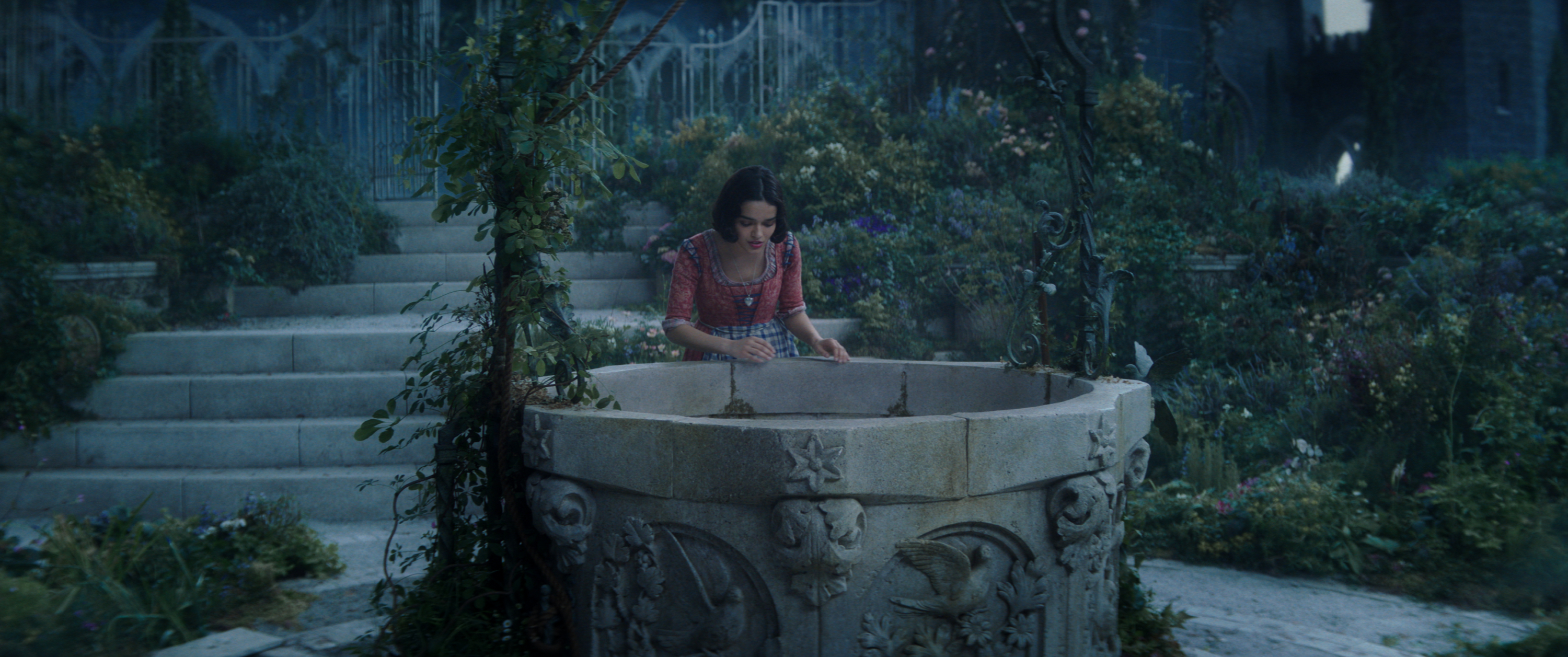How was the world of Snow White created in live-action? Disney reveals what elements of reality inspired it.

Snow White is one of the stories that has captivated millions of people since childhood. The tale of the evil queen, a poisoned apple, getting lost in the forest, waking up to a kiss from true love , and more fantastical ideas are all elements that make this princess and her universe unforgettable.
So when Disney took on the challenge of bringing this tale to live-action, they strove to create a stunning aesthetic of the castle with the magic mirror, the endearing animals, and Snow White's kingdom. So they entrusted the task to the film industry's finest to bring the film's action-packed settings to life.
“The animated film has so many iconic elements, so we spent a lot of time reflecting on those moments in the film. From the mirror room and the Evil Queen's balcony to the miners' cabin and the wishing well… we wanted to not only preserve but also enhance all of those elements ,” notes production designer Kave Quinn.
With this premise in mind, and based at Pinewood Studios in London, the team led by Quinn created striking physical environments in which characters played by real actors and actresses coexist with fantastical characters created using cutting-edge technological resources.
“One of the reasons we felt it was the right time to make this film is that there were things that could only be achieved with animation in the past, but today's technology allows us to create a fantasy world and bring it to life in a way that would never have been conceivable in 1937,” explains producer Jared LeBoff.

Gal Gadot as the Evil Queen in Disney's live-action Snow White. Photo: Giles Keyte
He adds: "Pushing the boundaries of what's possible in visual effects gives us the opportunity to bring these beloved characters to life in a way that makes you believe they exist in the same physical universe as the human actors surrounding them."
Along with the mirror room, the miners' cabin, and the iconic wishing well mentioned by Quinn, the creative team brought to life the castle's imposing spiral staircase, dungeon, potion room, throne room, dining room, and kitchen, as well as the Evil Queen's bedroom and balcony. The artists also created the spooky forest and the glade where Snow White sleeps, and the apple orchard.
To bring Snow White's mythical kingdom to life, Quinn and her team drew inspiration from medieval and Gothic architecture, Art Deco, and silent films. To create the castle, the designer moved away from the French influence evident in the animated version and leaned toward a German style.
“I was primarily inspired by Germany for its Late and Early Gothic architectural styles. We also wanted the castle and kingdom to have a Bavarian feel, as it's the place where the Brothers Grimm fairy tale originated ,” notes Quinn, referring to the literary work that inspired the 1937 film.
Specifically, two real castles served as inspiration for the new film: the Albrechtsburg Castle in the German city of Meissen, and the Chillon Castle in Switzerland, whose dungeon served as inspiration for the Evil Queen's dungeon.
The village, meanwhile, has a similar appearance to the castle, as the idea was for it to have the same social standing. “The relationship with the castle gate is that it's always open while it's the good kingdom. However, when the Evil Queen takes control, the gates close, marking a difference in her way of governing ,” adds Quinn.
The forest where Snow White takes refuge is another key setting in the story. The scenes were filmed at Burnham Beeches, a 200-hectare ancient woodland in Buckinghamshire, England.
The forest sequences combine live-action footage from the location, where actress Rachel Zegler plays Snow White, with forest animals created by the visual effects team in post-production. Among others, owls, rabbits, birds, turtles, squirrels, mice, and bats appear in the scenes.

Rachel Zegler as Snow White Photo: Disney
The miners' cabin, meanwhile, stands out for its many decorative details that add uniqueness to the setting. The interior of the house was built of wood, with beams decorated with carved owls , both sleeping and awake, as well as other sculpted birds.
Also noteworthy is a hand-painted wooden chandelier with intricately carved bird and lantern details. An added bonus? The carved wooden piano was designed to resemble the one in the animated film.
The new live-action film based on the animated film is available to watch on Disney+.
eltiempo

%3Aformat(jpg)%3Aquality(99)%3Awatermark(f.elconfidencial.com%2Ffile%2Fbae%2Feea%2Ffde%2Fbaeeeafde1b3229287b0c008f7602058.png%2C0%2C275%2C1)%2Ff.elconfidencial.com%2Foriginal%2F996%2Fbad%2Fffc%2F996badffcaf2cb8b810be6ccffbcc834.jpg&w=3840&q=100)
%3Aformat(jpg)%3Aquality(99)%3Awatermark(f.elconfidencial.com%2Ffile%2Fbae%2Feea%2Ffde%2Fbaeeeafde1b3229287b0c008f7602058.png%2C0%2C275%2C1)%2Ff.elconfidencial.com%2Foriginal%2F07d%2F596%2F09b%2F07d59609b3d960eb2d29bd989e8b8d33.jpg&w=3840&q=100)


